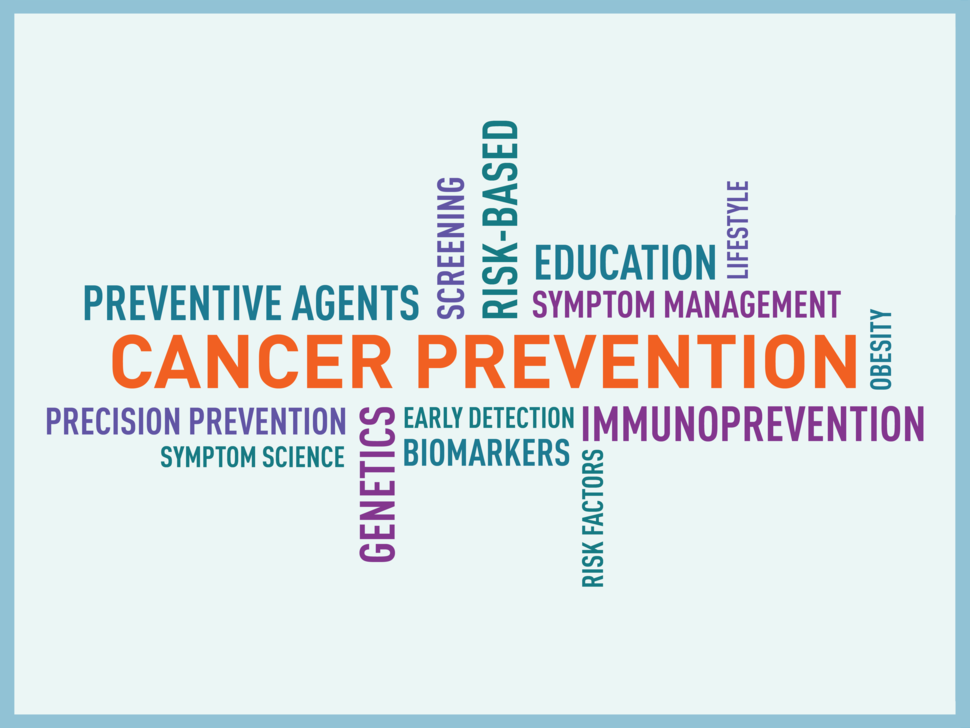Advancing Cancer Prevention: A Conversation with NCI’s Dr. Philip Castle
, by Carmen Phillips
Philip Castle, Ph.D., M.P.H., joined NCI in July 2020 as director of the Division of Cancer Prevention (DCP). Dr. Castle previously worked at NCI in the Division of Cancer Epidemiology and Genetics (2002–2010), where he led numerous research projects, including studies of HPV and its connection to cervical and anal cancers. To mark his first year as DCP director, Dr. Castle discusses DCP’s priority areas and his vision for making more rapid progress in cancer prevention.
What do you see as the most promising possibilities for, and barriers to, real progress in cancer prevention over the next decade?
There are a variety of areas of promise. One area that we’re working very hard to develop is precision cancer prevention. What I mean by that is using what we know about a person—their genetics, risk factors, lifestyle—to tailor our prevention strategies. And as an anchor to that, we’re using molecular sciences to flesh out the best approaches for advancing this work.
At the same time, we want to democratize cancer prevention, developing new strategies that make proven prevention measures more broadly accessible, particularly for underserved populations. For instance, efforts to expand the use of self-sampling with HPV DNA testing for cervical cancer screening.
As for barriers to progress, I see two major issues. One that has been called the “prevention paradox”: If we’re successful with prevention, there’s nothing to observe because we’ve avoided a bad outcome—cancer. It’s what I call an “event bias,” where we tend to notice the events that occur rather than the absence of events. That’s a real hurdle, particularly for getting people to recognize the importance of prevention and support for prevention research. There is no prevention equivalent to a cancer champion.
A second barrier is the benefits-to-harms ratio of any prevention-focused interventions. When you’re talking about cancer prevention, you’re primarily dealing with generally healthy people. So the tolerance for any side effects from a prevention intervention is very low. Many people won’t get cancer in their lifetime, and you don’t want to harm anybody who was never going to get cancer. That’s the struggle we’re up against.
Prevention is a broad topic. Have you identified priority areas for the division?
Yes, there are three research arcs we’re focused on.
One is developing preventive agents. That involves identifying “druggable” targets for preventive drugs and developing the drugs themselves. That work is anchored in molecular sciences, understanding cancer-promoting signaling pathways in cells and how to interrupt them, and using that information to develop new pharmacologic agents or repurpose existing drugs for use in cancer prevention.
The second research arc is discovering biomarkers that can identify who is at increased risk of cancer. Eventually, those two areas will come together: We will be able to use a biomarker that can identify who’s at risk, and then provide a preventive agent to mitigate that risk, based on an individual’s underlying biology.
It’s about understanding who is at high risk and developing and implementing risk-informed interventions while identifying those at lower risk and backing off. It’s not one-size-fits-all prevention.
The third relates to improving symptom management in those with cancer who are undergoing treatment, which is also a part of DCP’s research portfolio. And, just like we want to do for prevention and treatment, we also want to make symptom management more precise. So we need to better understand the biology behind a person’s symptoms due to cancer and their responses to treatments.
Once we understand the biology and genetics of cancer-related and treatment-related symptoms—that is, symptom science—we can better tailor the use of current medications to prevent and/or alleviate symptoms and develop new, more effective medications in the future.
This has an important impact on survivorship: The longer we keep people with cancer healthy, the more likely they are going to be able to get the next-in-line therapy and even therapies that have not been invented today but will be tomorrow.
A big part of prevention is early detection. There’s been recent progress in the development of multicancer early detection tests. What are your thoughts about these tests?
There is clearly a tremendous amount of promise and excitement with these multicancer early detection tests, which are single tests that can potentially identify the presence of multiple cancers. And that includes cancer types for which there are currently no screening tests.
However, if we’re looking at the available evidence objectively, to date all these tests have shown is that they can detect cancer. The big question is: Can we detect the cancer at an early enough stage that we reduce the risk of death from that cancer? That’s the litmus test for any cancer screening test.
Along those lines, I fully support [NCI Director] Dr. Sharpless’s call for NCI to conduct a large clinical trial to try to answer that question.
Diet and exercise are areas of intense interest in cancer prevention. Where do you think these two areas fit into the overall prevention picture?
The thought is definitely out there that if you eat this specific thing or avoid this other thing, you’ll prevent cancer. Unfortunately, no specific foods or activities are proven to prevent cancer, except perhaps avoiding cooked red meat, and there are numerous factors that make research to identify such factors difficult to do.
Still, we know that obesity increases the risk for about 13 cancers. And we know that a healthy lifestyle, including weight management, will likely reduce your cancer risk. Of course, not everyone has equal access to healthy foods and things that promote healthy behaviors and much of that is influenced by policy matters.
But from a research perspective, one of the things we can do is find innovative ways to educate people about how to achieve a healthier lifestyle and interrupt the cycle of obesity, not just for cancer health but for their overall health.
Immunotherapy is now being studied as a potential way to help prevent cancer. Where does this research stand?
Immunotherapy has been a great advance for cancer treatment. So this “immunoprevention” research is essentially looking at whether we can harness the immune system as a form of cancer surveillance, to detect and snuff out cells with the earliest changes that will lead to cancer.
In DCP, we’re starting a new initiative to promote the discovery of preventive therapies, and that will include some immunoprevention drugs. In particular, we’re expanding activities around developing preventive agents for those at high risk for cancer, such as those with a genetic predisposition like Lynch syndrome. The idea is to start this work with a focus on the highest-risk groups, make progress for them, and then apply what we learned and work towards immunoprevention in people who are at average risk.
Some drugs have been approved for cancer prevention or risk reduction, such as tamoxifen for breast cancer, but few people have chosen to use them. Are you concerned that could happen with any new prevention drugs?
It’s an important issue. Let’s take aspirin, for example. If you’re at high risk of colorectal cancer and/or cardiovascular disease, it may make complete sense to take low-dose aspirin. However, if you walk down the street and ask somebody if they knew aspirin was a preventive agent for colorectal cancer, as hard as it might be to believe, some might say, “What is colorectal cancer?” These are real issues. And they show that a big part of our challenge is education and communication.
We know that one of the barriers of using tamoxifen as a preventive agent is its toxicity—that benefits-to-harms ratio I mentioned earlier—especially if used over long periods of time. But just as we are looking at innovative ways to deliver screening tests, there are innovative ways to deliver preventive agents so more of the drug gets to the tissue we are trying to protect and less to the other places in the body where the toxicity may occur.
In the case of tamoxifen, for example, we are funding an early-phase clinical trial on topical tamoxifen delivered to the breasts of women at high risk of breast cancer and the results to date are very promising.
Do physicians have a major role there, in educating and communicating about cancer risk and prevention?
Absolutely. We know most people feel that their doctors are the most trusted sources of medical information. But we also know that many physicians are already overwhelmed with what’s on their shoulders. They can’t spend an hour in consultation with every patient. In addition, they may not be fully up to date on the latest science. We need to educate the educator.
So we’re going to have to rely on other health experts—nurse practitioners, community health workers—to convey information about the importance of activities that promote good health, including reducing cancer risk. That means that we need to educate them as well.
What role do you see technology playing in advancing progress in prevention?
Of course it plays a very important role. As a consequence, [in DCP], we’re going to be looking for a chief technical officer to guide us in the use of new technologies for prevention.
One area where technology can have an important role is making screening tests better and faster, with point-of-care testing that can provide the results in the same day as the patent’s clinic visit. That can help reduce the number of people we lose to follow up, which is still too many.
In fact, we’re working with NCI’s SBIR program to promote the development of rapid HPV tests and at-home [hepatitis C virus (HCV)] testing. In the latter case, for example, chronic HCV infection can lead to liver cancer, but most HCV carriers don’t know that they’re carriers.
We now have very good antiviral treatments for HCV, but you can’t do anything about an infection you don’t know about. So a rapid at-home test could be an important prevention tool. As we have learned again and again, now from the COVID-19 pandemic, access is a key determinant to who participates in preventive services.
What do you see as the most important messages when it comes to cancer prevention?
I think it’s coming back to first principles. There’s that old saying: “An ounce of prevention is worth a pound of cure.” Imagine what a pound of prevention would be worth! However, that won’t happen without a philosophical shift in what we emphasize as the first line against cancer. Nobody, and I mean nobody, wants to get cancer.
And it’s important to say that we’re not going to prevent all cancers. That’s not going to be possible. But we need to take advantage of [the preventive measures] we have now. In addition, we need to press forward in a very concerted way so that we better understand the cancer process, and learn to identify who is at most risk and neutralize that risk before they develop cancer through innovative cancer prevention research.
I believe that we are entering the golden age of cancer prevention and I will do everything I can to help usher it in.

